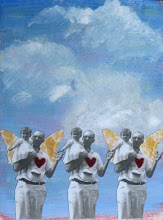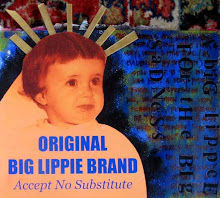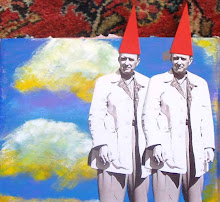
I love the work of Paul Cezanne. His landscapes are so vivid, his colors so vibrant. It's frightening to know that in this man's lifetime, he was misunderstood and rejected from exhibitions and even art schools for being without merit and talent (this was in part due to his early works being much darker and more somber than those with which we are most familiar). The man was a visionary and way ahead of his time in terms of technique. He was already halfway through his life before he developed the style that he is now known for and during his lifetime he was always the outsider, never accepted, and garnered very little success while he was alive.
As someone who has an obsession with painting apples, how could I not love a man who also spent a great deal of his time composing still lifes of apples and oranges (more than 200), and who said he wanted to "conquer Paris with an apple."? There's a guy after my own heart. I could paint nothing but apples and be happy for the rest of my life (even if I bored the shit out of everyone else with my work). He enjoyed painting them for the same reasons that I do: they are the one of the most basic and complete geometric shapes of nature, the circle. Apples are small little objects of perfection. They are all the same as one another, and yet they are all different. There is a world of color to be found within them. They are at once vivid and soft, plain and dramatic. They have character and personality. They are little embodiments of our harvests, our abundance. Simply put, they're beautiful.
Like so many artists who went before him and those who came after, he never knew his own genius and I wish that he had known in his lifetime the talent he possessed and the joy that it still brings to others. It's such a shame that so many brilliant people die broken and in pain thinking they were worth nothing. Cezanne was an amazing artist and I adore both him and his work. Picasso said that Cezanne was his "one and only master, that Cezanne was like the father of us all." I think that says it all.







